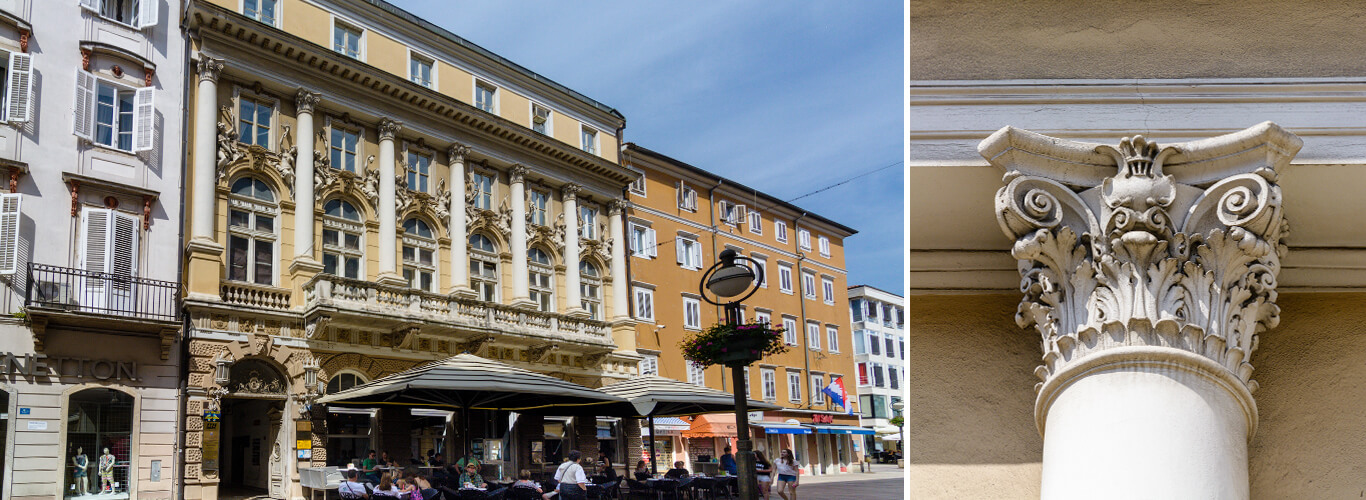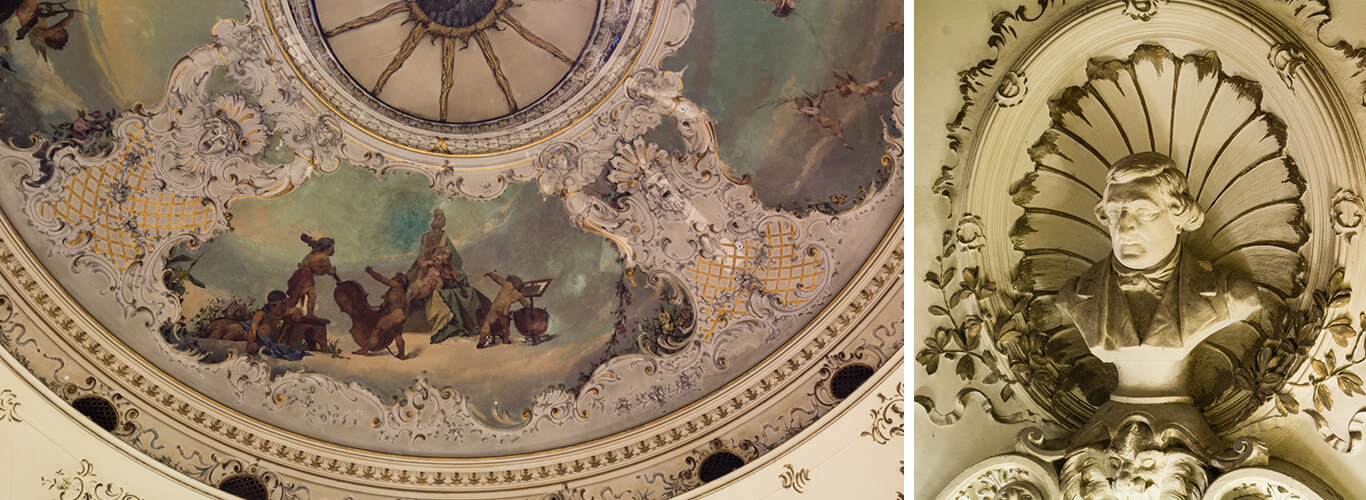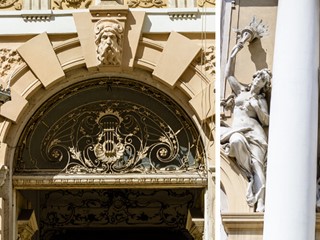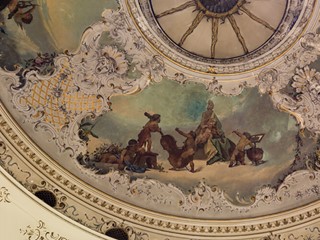Filodrammatica
address: 28 KorzoPeriod: Historicism
Kind: Immovable material heritage
Century: 19
Year: 1890
Purpose: cultural
At the site of the today’s Filodrammatica building on 28 Korzo Street, originally there was the Struppi house. After the house was bought by the Philharmonic Drama Association, a new edifice was built according to the project by the architect Giacomo Zammatti from Rijeka, who modelled it according to the middle European musical institutions. The building was formally opened in 1890.
The influences of Italian high Renaissance and Mannerism can be distinguished on the street façade. The rustically shaped ground floor is broken down with arched openings, while the area from the first floor to the cornice is articulated with Palladian half-columns with Corinthian capitals between which there are arched openings. On each side of the arched openings, there are sculptures of female figures. The areas around the window openings on the attic were painted by Giovanni Fumi. The interior of the building was adjusted to the needs of the musical association and contained the performance hall, practice hall, reception hall and other rooms which the association used. A theatre with the floor, a stage and a balcony was formed through the upper two floors. The theatre is decorated with Rococo stuccos and a ceiling painting showing an allegory of music made by the painter Eugenio Scomparini from Trieste. The busts of musicians made by Ludwig Strichtius, an artist originating from Vienna, were also situated there. The rest of the Filodrammatica interior was decorated in the style of the Italian neo-Renaissance.
During the construction of the coffee-room in the ground floor of the Filodrammatica, owing to the lack of space the staircase was inserted on the side of the entrance into the building, so it is not rich and monumental as it was first planned. However, the building itself was extremely representative at the time it was constructed and it was prominent among other buildings on the Korzo because of its luxuriousness. Considerable financial means were invested into the building, which shows the early interest of the citizens of Rijeka in theatrical activities.
Valorization:
The building Filodrammatica is protected as a cultural good since 1992.
Bibliography:
de Canziani Jakšić, Theodor, Dekorativno fasadno slikarstvo u Rijeci, State Archives in Rijeka, 2001.
Glavočić, Daina, Arhitektura historicizma u Rijeci, http://www.ipu.hr/uploads/documents/483.pdf
Kazališta u Rijeci, http://www.rijeka.hr/KazalistauRijeci
Matejčić, Radmila, Kako čitati grad: Rijeka jučer, danas, Adamić, Rijeka, 2007.
Nepokoj, Denis, Teatar i povijesni prizori, exhibition catalogue, Maritime and History Museum of the Croatian Littoral Rijeka, Rijeka, 2013.
Palinić, Nana, Zgrade za kulturu i zabavu, in: Arhitektura historicizma u Rijeci: 1845. –1900., Modern Gallery Rijeka and MMSU, Rijeka, 2002, pp. 240–265.
Zgrada Filodrammatica, Rijeka, Korzo 28, http://www.rijeka.hr/Default.aspx?art=7894








